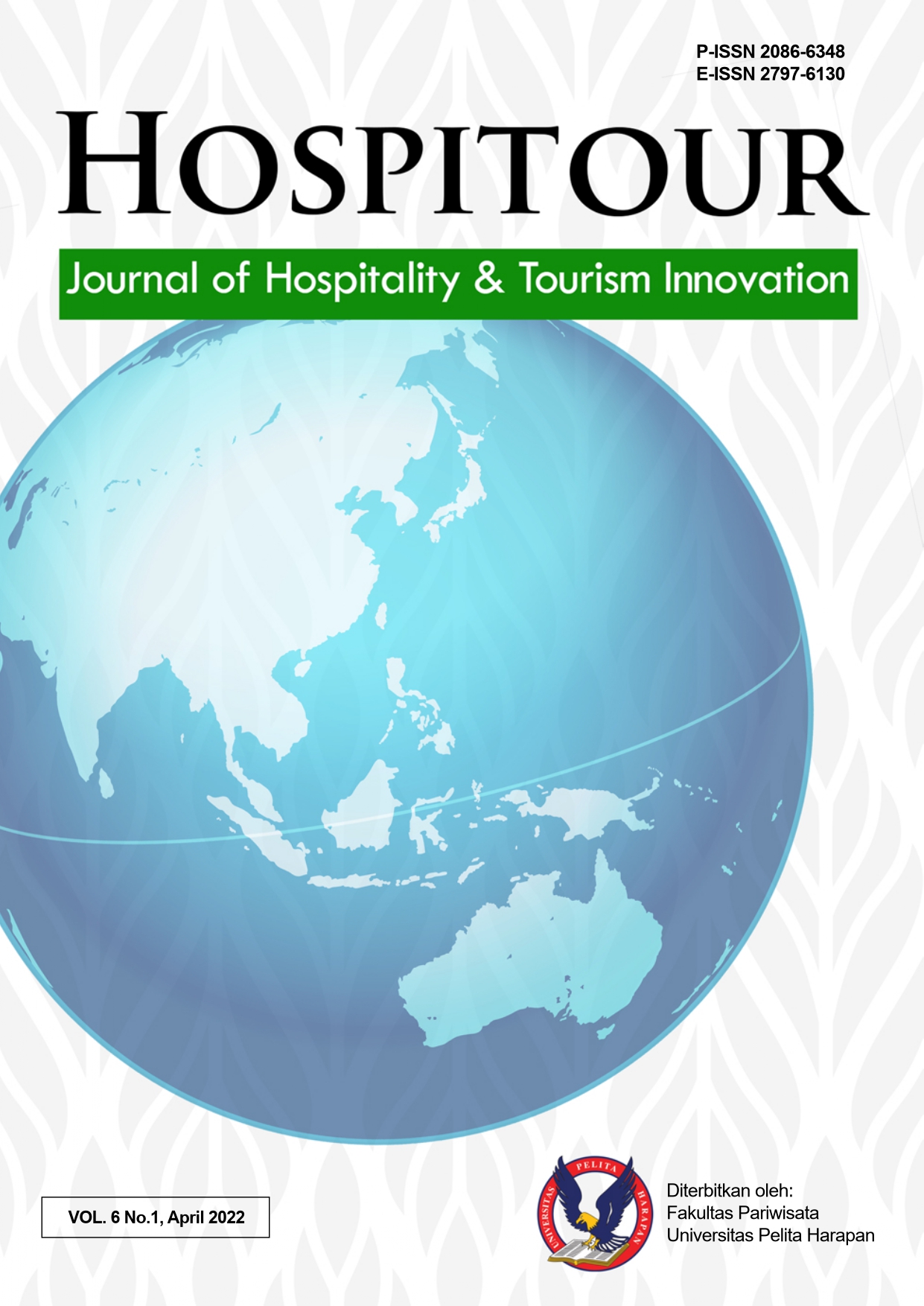MINUMAN TRADISIONAL DI PASAR TABANAN BALI
Keywords:
Traditional drinks, Tabanan Market, Bali culinaryAbstract
The development of culinary tourism has begun to be in great demand by domestic and international tourists. Tourists who come to Bali have started to look at traditional culinary delights because it is not complete to visit an area without enjoying traditional culinary delights, especially in Bali, especially in the Tabanan market, which sells many typical dishes from various regions in Bali, be it traditional food or drinks. Apart from being a thirst quencher, traditional drinks are also widely drunk as traditional medicines that are beneficial for the health of the drinker's body. Tabanan has 17 markets (Pasar) spread across all sub-districts in Tabanan Regency including Pasar Tabanan, Pasar Dauh Pala, Pasar Kediri, Pasar Pupuan, Pasar Surabrata, Pasar Bajera, Pasar Megati, Pasar Gadungan, Pasar Senganan, Pasar Kerambitan, Pasar Marga, Pasar Baturiti, Pasar Penebel, Pasar Candi Kuning, Pasar Sayur Induk Baturiti, Pasar Tanah Lot, and Pasar Ulun Danu.
Among these markets, Tabanan Market is the center of traditional markets in Tabanan Regency because it is located in the center of Tabanan city. Tabanan Market is one of the culinary tourism destinations because of the variety of food and beverages sold in this market, so it is not uncommon for domestic and international tourists to shop at Tabanan market. This research was conducted at the Tabanan market in Bali with a purposive sampling method with a total of 110 respondents. The purpose of this study was to find out what traditional drinks are commonly sold in the Tabanan market, Bali and what traditional drinks are favorites/preferred by visitors at the Tabanan market, Bali. This research is a simple quantitative descriptive research. The theory used is the theory of traditional drinks and a questionnaire about consumer preferences. The benefit of this research is as a reference for tourists visiting the Tabanan market, Bali. The conclusion of this study states that there are six traditional drinks sold in the Tabanan market, Bali, namely Es Daluman, Es Cendol Bears, Rujak Tibah, Loloh Kunyit, Loloh Base/Sirih, and Loloh Sambiloto. Es Daluman and Es Cendol Beras are traditional drinks that are enjoyed at the Tabanan market, Bali.
References
Atmodjo, 2004. Bar, Minuman, dan Penyajiannya. Yogyakarta:penerbit ANDI
Kruger Vivienne, 2014. Balinese Food: “The Traditional Cuisine And Food Culture of Bali”. North Clarendeon: Tuttle Pulishing
Lumanauw Farly. Bar Dan Minuman. Jakarta : Gramedia Pustaka Utama
M. Darwis. 2001. Penataan Kembali Pasar Kotagede. Yogyakarta : Lembaga Studi Jawa
Ma’aruf, 2005. Pemasaran ritel. Jakarta:PT Gramedia
Margono, 2005. Metodologi penelitian. Jakarta: Rineka Cipta
Muktar,2013. Metode Praktis Penelitian Deskriptif Kualitatif. Jakarta: (Gp Press Group)
Mukthar, 2013. Metode penelitian deskriptif kualitatif. Jakarta: GP Press Group
Neuman, W. Lawrence, 2000. Social Research Methods: Qualitative And Quantitative Approaches/ By W.Lawrence Neuman. London : Allyn and Bacon
Sinaga Pariaman, 2004. Pasar Modern VS Pasar Tradisional. Jakarta:Kementrian Koperasi dan UKM
Sugiyono, 2005. Memahami penelitian kualitatif. Bandung: Alfabeta
Sugiyono, 2008. Metode penelitian kuantitatif, kualitatif dan R&D/Sugiyono. Bandung :Alfabeta
Sugiyono, 2013. Metode Penelitian Pendidikan ( Pendekatan Kuantitatif, Kualitatif dan R&D). Bandung:Alfabeta
Sunaryo, 2015.Minuman Tradisional Penguat Kekebalan Tubuh.Jakarta: Elex Media Komputindo
Wikipedia. (Februari, 2019). Minuman. https://id.wikipedia.org/wiki/Minuman
Wikipedia. (Mei, 2019). Definisi Minuman. https://id.m.wikipedia.org/wiki/definisi minuman
Wikipedia. (Mei, 2019). Eksplorasi. https://id.m.wikipedia.org/wiki/ekplorasi
KBBI. (Juni, 2019). Eksplorasi. https://www.google.co.idamp/s/kbbi.web.id/
eksplorasi.html
Downloads
Published
Issue
Section
License
Authors who publish with this journal agree to the following terms:
1) Authors retain copyright and grant the journal right of first publication with the work simultaneously licensed under a Creative Commons Attribution License (CC-BY-SA 4.0) that allows others to share the work with an acknowledgement of the work's authorship and initial publication in this journal.
2) Authors are able to enter into separate, additional contractual arrangements for the non-exclusive distribution of the journal's published version of the work (e.g., post it to an institutional repository or publish it in a book), with an acknowledgement of its initial publication in this journal.
3) Authors are permitted and encouraged to post their work online (e.g., in institutional repositories or on their website). The final published PDF should be used and bibliographic details that credit the publication in this journal should be included.

